Lean East has recently begun working with new clients in the advanced manufacturing space. These clients manufacture products for use in industries like aviation, space, and medical devices, and they test equipment where a tiny quality defect can be catastrophic. In these industries, a simple defect in a part can crash an airliner and above all, kill everyone on board. This post will help employees, as well as prospective employees, understand the basics of quality systems – in aerospace, medical devices, and other products.
QMS Acronyms
This post will cover important QMS areas including ISO standards, FDA requirements, APQP, MSA, and PPAP basics. I thought it would be helpful for the above sentence, and the rest of this post, to define these and other important QMS acronyms. There are a lot of acronyms to become familiar with!
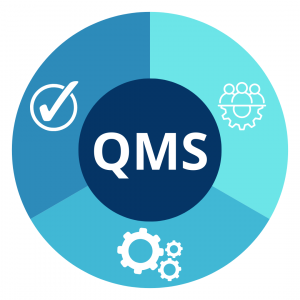
- QMS = Quality Management System
- ISO = International Standards for Organization
- FDA = Food & Drug Administration
- APQP = Advanced Product Quality Planning
- PPAP = Product Part Approval Process
- MSA = Measurement System Analysis
- FMEA = Failure Modes and Effects Analysis
- SPC = Statistical Process Control
- CAPA = Corrective and Preventive Action
- DFMA = Design for Manufacturing & Assembly
- CofC = Certificate of Conformance
- Gage R&R = Gage Repeatability & Reproducibility
- PDCA = Plan, Do, Check, Adjust
- RCA = Root Cause Analysis
- KPI = Key Performance Indicators
- 6σ = Six Sigma
- DMAIC = Define, Measure, Analyze, Improve, Control
Lean East Team Quality Background
At Lean East, we have team members and associates with extensive training and experience in quality systems. My past includes stints as a process engineer, manufacturing engineer, design engineer for new products, quality manager for a large division of an international manufacturer, internal ISO auditor for multiple companies, head of operations for an ISO-certified and FDA-regulated industry, and Lean Six Sigma Black Belt.
This post only covers the basics of quality systems – if you want advanced knowledge, then I suggest you work for a company with a robust QMS and learn from them! Anyhow, let’s get going.
Quality Management System (QMS) Standards
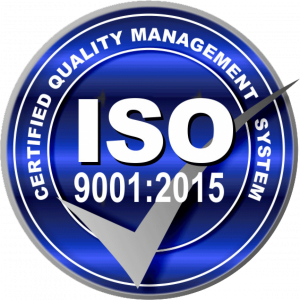
These are frameworks with specific requirements that organizations can implement and get certified against. The most common standard is ISO 9001. This is the most widely recognized standard, outlining a framework for a quality management system that applies to any organization regardless of industry.
There are also industry-specific standards, like:
- IATF 16949: This applies to the automotive industry and is based on ISO 9001 with additional requirements specific to automotive manufacturing.
- ISO 13485: This applies to medical devices and focuses on quality management for medical device design and production.
- ISO 22000: This applies to the food industry and focuses on food safety management.
- ISO 20000: This applies to IT service management and focuses on delivering quality IT services.
- AS9100D: This applies to the aerospace industry and is based on ISO 9001 with additional requirements for aerospace quality.
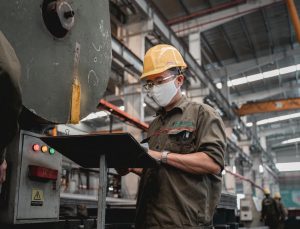
Choosing the right system depends on your organization’s size, industry, and of course, specific quality goals.
Any QMS requires the organization to “do what you say, and say what you do.” Processes must be documented and followed. While the ISO 9001 standard does not require a quality manual for the organization, most systems are defined by an overarching quality manual that outlines QMS policies, procedures, and processes.
ISO 9001 emphasizes a focus on continual improvement through a documented Corrective and Preventive Action (CAPA) process. This means you need a system for identifying, investigating, and addressing problems (corrective actions) to prevent them from recurring. Additionally, the standard encourages taking preventive actions to identify and address potential problems before they occur.
Benefits of ISO Certification
There are several reasons why a company might choose to become ISO-certified:

- Improved Customer Satisfaction: ISO certification demonstrates a commitment to quality, which can increase customer confidence and trust.
- Enhanced Efficiency and Reduced Costs: The process of implementing ISO standards often leads to streamlining of operations and identification of areas for waste reduction, resulting in greater efficiency and cost savings.
- Competitive Advantage: In many industries, ISO certification is a prerequisite for selling to companies or government agencies. These buyers may require parts to be sent with a Certificate of Conformance (CofC) confirming the product aligns with essential production, technical, and safety requirements
- Stronger Risk Management: ISO standards provide a framework for identifying and mitigating risks associated with your operations. This can help to prevent problems and improve overall business continuity.
- International Recognition: ISO certification is a globally recognized symbol of quality, beneficial for companies that want to expand their reach into international markets.
- Continuous Improvement: ISO standards are designed to be continually improved upon. Following these standards encourages a culture of continuous improvement within your organization.
ISO certification must be granted by an approved neutral third party and must also be maintained through regular auditing. These audits can be internal (performed by the organization itself) or external (performed by a certification body). Not addressing audit findings through a CAPA can result in losing ISO certification.
Advanced Product Quality Planning (APQP)
Advanced Product Quality Planning (APQP) is a structured method used primarily in the automotive and aerospace industries to ensure high-quality products are developed and produced.
Here’s a breakdown of the five key stages involved:

- Plan and Define: This initial phase focuses on understanding customer needs and translating them into clear product specifications. Activities include creating a product quality plan and also outlining the project timeline.
- Product Design and Development: The focus here is on designing the product itself. Drawings and specifications are created that meet manufacturability requirements, and activities include design reviews, Failure Modes and Effects Analysis (FMEA)s, and also identifying any potential quality risks.
- Process Design and Development: The emphasis shifts to developing the manufacturing processes that will create the product. This includes defining the equipment and tooling needed, and the design for manufacturing assembly (DFMA), establishing control plans to ensure quality throughout production, and planning for supplier requirements. Product packaging and process instructions are typically also part of this stage.
- Product and Process Validation: This stage is all about verifying the effectiveness of the product and process designs. Here, prototypes are built, and the manufacturing process is tested to confirm it can consistently produce a high-quality product that meets all specifications. Controls are used to validate the product and process, and process capability is studied for setting up Statistical Process Control (SPC) later.
- Feedback, Assessment, and Corrective Action: The final phase involves continuous improvement during the regular production process. Production data is analyzed, and any deviations from quality standards are identified and addressed. This ensures ongoing monitoring and refinement of the entire process.
By following these steps, APQP helps identify and mitigate potential quality issues early on, leading to a smoother production launch and a higher-quality final product.
Production Part Approval Process (PPAP)
PPAP, or Production Part Approval Process, is a standardized method in the automotive and aerospace industries to ensure parts meet quality requirements. Here’s a breakdown of the key steps involved:
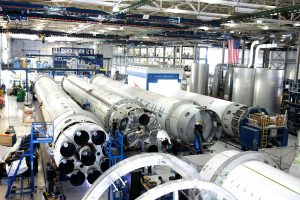
- Planning: This initial phase involves collaboration between the supplier and the customer. They work together to define the submission level (amount of data required) and gather necessary documentation like design records, process flowcharts, and control plans.
- Production Sample Preparation: The supplier produces a sample run of parts following the agreed-upon manufacturing processes.
- Part Submission Warrant (PSW) Completion: This document serves as a cover sheet summarizing the entire PPAP submission. It includes information like the part number, revision level, and approval status.
- Supporting Documentation Collection: The supplier gathers various documents as per the agreed-upon submission level. This might include:
- Design documentation (drawings, specifications)
- Failure Mode and Effects Analysis (FMEA) for both design and process
- Measurement results verifying parts meet specifications
- Records of material or performance tests
- Appearance Approval Report (ensuring parts meet visual requirements)
- Checking Aids (tools used for inspection)
- Customer Review and Approval: The customer receives the PSW and supporting documentation for review. They may request additional information or conduct audits before granting final approval.
By following these steps, PPAP ensures clear communication and documentation throughout the manufacturing process, leading to consistent production of high-quality parts.
Measurement Systems Analysis (MSA)
Measurement Systems Analysis (MSA) helps assess the quality and consistency of your measurement equipment and processes. I have completed Gage R&R studies many times in my career, and am always amazed at the amount and source of variation in the measurement process!
Here’s a breakdown of the key steps involved:
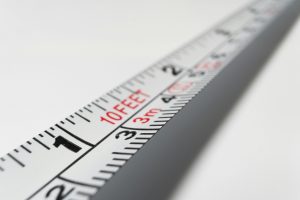
- Planning the Study:
- Define the measurement you’re analyzing (e.g., dimension, weight).
- Decide on the number of parts, trials, and appraisers needed for the study.
- Sample Collection and Operator Selection:
- Select a representative sample of parts that covers the typical variation in your process.
- Choose multiple appraisers who regularly perform the measurement.
- Measurement Process:
- Ensure all appraisers are trained on the proper measurement procedure.
- Have each appraiser measure each part multiple times (following the defined plan).
- Calculations & Analysis:
- Analyze the data to assess two key aspects:
- Repeatability: How consistent are measurements taken by the same appraiser on the same part?
- Reproducibility: How consistent are measurements taken by different appraisers on the same part?
- Depending on the analysis method used, you might calculate metrics like variance ratios to determine the contribution of measurement variation to the overall process variation.
- Interpretation and Action:
- Based on the results, determine if the measurement system is acceptable for your needs.
- If the measurement system shows excessive variation, identify root causes and take corrective actions to improve its performance.
By following these steps, MSA helps ensure your measurements are reliable and can be trusted to accurately reflect the actual quality of your products.
Summary
Lean East is leading a new training program focused on teaching QMS basics like those described in this post. We want to help employees at manufacturers and other organizations where quality is critical to understand the basics of quality systems. Please contact us to learn more about this training.
Please feel free to ask us questions about QMS and advanced quality methods in the comments area below.


Related Posts
The God Complex: Why We’re All Making This One Mistake
How I am Changing the Career Advice I Give My Kids
This is Never Going to Work: Getting Lean Projects Unstuck